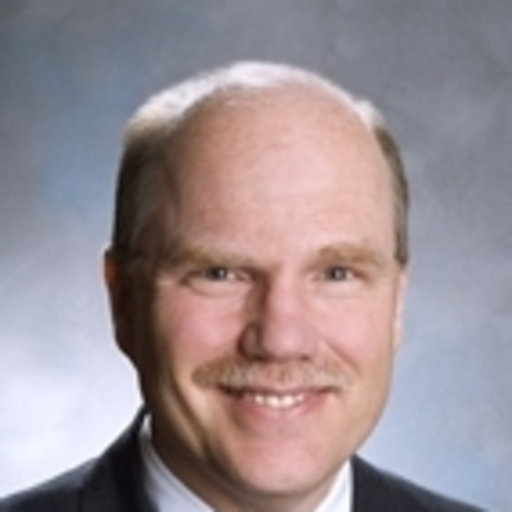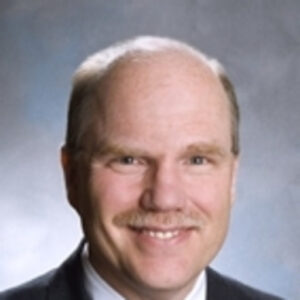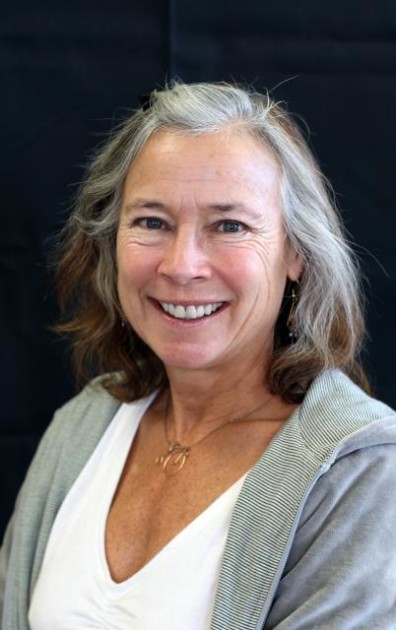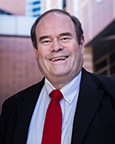

Joseph Madsen received his undergraduate degree from the University of Utah in 1976. He then went on to earn an MD from Harvard Medical School in 1981. Between 1981 and 1983, he completed an internship followed by a research fellowship with Beth Israel Deaconess Medical Center in Boston, then completed his residency in 1989 with Massachusetts General Hospital. He has certifications with the American Board of Neurological Surgery and the American Board of Psychiatry and Neurology in Child Neurology. He has developed new techniques for monitoring shunt flow in patients with hydrocephalus, as well as predicting seizures using intracranial data gathered from implanted electrodes. Aside from practicing pediatric neurosurgery at Boston Children’s Hospital, Madsen is an adjunct professor in functional neurosurgery at Xanwu Hospital, associated with Capital Medical University, Beijing Institute of Functional Neurosurgery. He hopes to improve pediatric neurosurgery and epilepsy surgery abroad, especially in China, and has been working on a mechanism to review surgical cases in real-time with colleagues at Beijing’s Children’s Hospital.

Jeanne McHale earned a BS in Chemistry from Wright State University in 1975. She then attended the University of Utah for her Ph.D., which she received in 1979 with Jack Simons, followed by postdoctoral research with Jim Wang. Jeanne was a member of the chemistry faculty at the University of Idaho from 1980 until 2004, which is when she joined the chemistry faculty at Washington State University, where she is currently a Professor Emerita. She is a fellow in the American Association for the Advancement of Science and the author of Molecular Spectroscopy (Prentice-Hall, 1999). She also edited the Handbook of Luminescent Semiconductor Materials (Taylor & Francis, 2011) with co-editor Leah Bergman. The McHale lab specializes in the use of resonance Raman and photoluminescence spectroscopy for the study of molecules and nanomaterials with interesting optical and electronic properties. Fundamental quantum mechanical aspects of electron transfer in solution and in interfacial systems are a major focus of their experiments. McHale’s group pioneered the use of resonance Raman spectroscopy to study solvent dynamics in electron-transfer reactions.

Craig Thatcher earned a BA in Chemistry from the University of Utah in 1974, a natural course for him since his grandfather was a chemistry teacher and founder of Wasatch Chemical Company, and his father was a chemical engineer and founder of Thatcher Chemical Company. After receiving his undergraduate degree, Thatcher attended graduate school at Northwestern University, where he earned an MBA in Marketing in 1976. He and his wife Connie spent their first year of marriage in Centerville, Utah, where he began his full-time career at Thatcher Chemical Company, a company to which he still dedicates his time and energy as president. The Thatcher Chemical Company has grown from humble beginnings with two employees and no facilities to a company of over 500 employees in 11 U.S. locations with customers throughout the world. The company is currently debt-free and has experienced rapid growth in recent years. Craig Thatcher is always looking to improve himself and assist in helping others and is actively involved in community service and charity work, as well as endeavors to build the Thatcher Chemical Company in an effort to achieve these goals.
Aaron Puri joined the faculty in January 2019. He completed his B.S. at the University of Chicago, his Ph.D. at Stanford University School of Medicine, and his post-doctoral research at the University of Washington in Seattle, where he was co-mentored by Mary Lidstrom and Pete Greenberg and worked on genetic tools and chemical signaling in methane-oxidizing bacteria as part of an NIH K99 Pathway to Independence Award.
2019 Faculty Awards:
Ryan Steele: Robert W. Parry Teaching Award.
Marc Porter: Entrepreneur Honoree for Technologies for Diagnosing Infectious Disease & Cancer
Joel Harris: University of Utah Hatch Prize for Teaching
Shelley Minteer: ECS David C. Grahame Award & Fellow of the American Association for the Advancement of Science
Holly Sebahar: College of Science Award for Teaching Excellence
Luisa Whittaker-Brooks: DOE Early Career Award, ACS Talented 12, 2018 Emerging Investigator Award, Journal of Materials Chemistry, 2019 Scialog Collaborative Innovation Award, Research Corporation for Science Advancement
Valeria Molinero: the University of Utah Distinguished Scholarly & Creative Research Award
Michael Grünwald: NSF Early Career Award
Rodrigo Noriega: Daniels Fund Award for Leadership in Ethics Education by the David Eccles School of Business
Michael Morse: OSA William F. Meggers Award
Valentine’s Day 2019 turned out to be a memorable day for Professor Joel Harris. Not only did he hear the news that he had received the Hatch Teaching Prize (the University’s most prestigious teaching award), but he was also surprised by a visit from a former student, Michael Hunnicutt, and his wife Sally. At the conclusion of Joel’s Distinguished Faculty Colloquium lecture, Dr. Hunnicutt announced that he and Sally would be establishing an endowment to support graduate students in the analytical chemistry program in honor of Joel’s extensive influence on many people’s lives and careers.
This generous gesture is evidence of the strong connections built and fostered through the Department of Chemistry as well as Joel’s legacy as the founder of the Analytical Chemistry Program at the University of Utah over forty years ago.
Throughout four decades, his dedication to teaching and mentorship has contributed to the success of more than 2,500 students who have learned from him in the classroom and over 100 undergraduate and graduate students, postdoctoral associates, and collaborators who have done research in his lab.
President Watkins appointed Henry S. White as the holder of the John A. Widtsoe Presidential Endowed Chair in Chemistry, effective July 1, 2019. This chair was recently held by our now emeritus colleague Dale Poulter. Henry has had an extraordinary career here for the past 25+ years. He essentially invented the area of nano-electrochemistry with groundbreaking work in ultramicro-electrodes, electroactive films, glass nanopores, and nanobubbles. A hallmark of his work is a “deep conceptual understanding coupled with exquisite experimental design,” according to outside experts in his field. Henry will soon complete 11 years of service to the Department and College as chair and dean, a time during which enormous growth in facilities has taken place as well as very strong growth in the quality of research and education.
Matt Sigman succeeded Cindy Burrows as Chair of the Department on July 1, 2019. During her tenure as Chair, Cindy hired X new faculty and established X endowed positions. Three of those endowed positions were established in the last year of her term: Valeria Molinero as the inaugural Jack and Peg Simons Endowed Professorship in Theoretical Chemistry; Ryan Looper as the inaugural Jon M. Huntsman Presidential Chair in Chemistry; Shelley Minteer as the inaugural Dale and Susan Poulter Endowed Chair in Biological Chemistry.
Endowed Chairs:
Scott Anderson currently holds the Henry Eyring Presidential Endowed Chair and is the recipient of many other significant awards during his time here at the Department of Chemistry since 1983, including the ACS Physical Division Award in Experimental Physical Chemistry, the Robert W. Parry Teaching Award, and the Distinguished Scholarly and Creative Research Award. Dr. Anderson’s research includes four main areas of activity in nanoparticle surface chemistry with distinct research foci ranging from single nanoparticles isolated in the gas phase to size-selected catalysts and electrocatalysts to methods for the production and characterization of surface-functionalized high-energy density nanoparticles for propellant applications.
Peter Armentrout is the Henry Eyring Presidential Endowed Chair of Chemistry. He began his career as a professor at the University of California at Berkeley, where he earned many awards before coming to the chemistry department at the University of Utah. He received the Governor’s Medal for Science and Technology Award from the State of Utah in 2010 and the Rosenblatt Prize for Excellence from the University of Utah in 2011. In 2011, his teaching was recognized by the Robert W. Parry Teaching Award. Dr. Armentrout is also a member of the editorial advisory board of the International Journal of Mass Spectrometry. His research group provides a detailed understanding of thermochemistry, kinetics, and dynamics of simple and complex chemical reactions. The Armentrout Group seeks to understand reactions involved in biological chemistry, hydration, catalysis, organometallic chemistry, plasma chemistry, and heavy element chemistry. Techniques involved include mass spectrometry, ion beams, molecular
Cindy Burrows has held the Thatcher Presidential Endowed Chair of Biological Chemistry since 2013 and is a member of the U’s Huntsman Cancer Institute. Her research investigates how DNA and RNA molecules are chemically altered by oxidation processes and how those alterations can lead to physiological consequences such as cancer. Her work has implications suggesting that DNA alteration via oxidation may be related to epigenetics, or alterations of gene expression, that may have shaped the course of life on Earth. Dr. Burrows is not only a prolific researcher and publisher, but she has also won teaching awards. Her passion for and dedication to excellent chemistry as a force to change the world for the better have significantly advanced the Department of Chemistry as a leading research institute.
Ryan Looper was awarded the Jon M. Huntsman Presidential Chair just this past summer as one of the newest faculty members to be awarded for excellent research, clinical care, and career progression. His research program focuses on the behavior of small molecules within biological systems, with the aim to develop compounds that can affect cell signals. These signals, in turn, play roles in diseases including arthritis, multiple sclerosis, and cancer. Looper and his lab are looking to understand the effects of these small molecules in order to expand and improve researchers’ biochemical toolbox. In addition, Dr. Looper is also working to develop new classes of antibiotics, desperately needed in our fight against multi-drug resistant infections, and learning more about how molecules bind to bacterial RNA in the process.
Shelley Minteer was recently awarded the Dale and Susan Poulter Chair of Biological Chemistry. Minteer’s career has focused on using nature as an inspiration and solution to chemistry problems. Her work has resulted in 17 issued patents and over 300 peer-reviewed publications in using biology as inspiration for biosensing, energy storage, energy conversion, and electrosynthesis. Dr. Minteer’s research will directly impact how we are able to store wind and solar energy. The Minteer Group researches bioelectrocatalysis, the biological catalysis of electrochemical processes, and is trying to mimic highly efficient processes in nature. They continue to further understand how living organisms consume food and do energy conversion to carry out daily activities. Recently, her research group developed a biofuel cell that employs mitochondria as the anode catalyst which is responsible for oxidizing fuel.
Valeria Molinero is the Jack and Peg Simons Endowed Professor of Theoretical Chemistry. Molinero’s research has pulled back the curtain on the freezing process, particularly in clouds. The Molinero Group has shown that when water droplets freeze in clouds, the structure of the ice crystal isn’t necessarily the classic hexagonal snowake structure. Rather, a more disordered ice structure forms more easily than hexagonal ice under certain cloud conditions, allowing the water droplets within clouds to turn to ice more rapidly than previously predicted. This study was published in Nature and reconciles theoretical models of clouds with observations of freezing rates. Throughout her career, Dr. Molinero has received awards for her research and teaching, such as the Extraordinary Faculty Achievement Award, the Camille Dreyfus Teacher-Scholar Award, and the College of Science Myriad Faculty Award for Research Excellence.
Matt Sigman has held the Peter J. Christine S. Stang Presidential Endowed Chair of Chemistry since 2012. His research group focuses on the discovery of new, practical catalytic reactions with broad substrate scope, excellent chemoselectivity, and high stereoselectivity to access novel, medicinally relevant architectures. They are currently engaged in several collaborative projects to evaluate their compound collections for various cancer types at the Huntsman Cancer Institute. Recently, in a new Nature publication, Dr. Sigman and a postdoc from his group, Jolene Reid, show how analyzing previously published chemical reaction data can predict how hypothetical reactions may proceed, narrowing the range of conditions chemists need to explore. Their algorithmic prediction process, which includes aspects of machine learning, can save valuable time and resources in chemical research.
Henry White learned that he received the Widtsoe Presidential Endowed Chair in Chemistry on the same day that he stepped down after eleven years of service, first as the Department Chair, then as the Dean of the College of Science, Back to teaching and research, Dr. White continues to pioneer groundbreaking work in nano-electrochemistry, ultramicro-electrodes, electroactive films, glass nanopores, and nanobubbles. Among many honors, he was the inaugural recipient of the Allen J. Bard Award in Electrochemistry and a winner of the Governor’s Medal for Science and Technology. He is a member of the American Academy of Arts and Sciences, a fellow of the AAAS and of the ACS, and he served as an Associate Editor for JACS for more than a decade.
Alumni News:
Tanner Coleman, Ph.D., OMS IV was accepted to Rocky Vista University School of Osteopathic Medicine in July 2015. Upon acceptance, he was granted the HPSP scholarship with the US Army. He will graduate from medical school this May and will do his residency training at Tripler Army Medical Center in Honolulu, HI in the field of radiology in June.
Lawrence Nathan, Ph.D. is enjoying 16 years of retirement in El Dorado Hills, CA. He taught chemistry at Santa Clara University from 1970-2003. He has enjoyed a bit of travel, lots of golf, and some free tutoring from high school chemistry teachers.
Joe Perry: JJ Perry (nom de plume), BA, MD graduated with a BA in Chemistry in 1972, the year he entered medical school at the U of U. He worked in biochemistry before and after graduation until medical school was too demanding. He practiced cardiology in Salt Lake City until 2003, at which time he began a second career in writing novels while practicing much less in neighboring states. In REAP 23, he used his chemistry and physics background heavily in this science fiction epic. In his novel to be published in 2020, Malady of Man, there is also a great deal of science, mostly biology, and anthropology. Dr. Perry says his education at the U provided a solid foundation for both practicing medicine and writing, as most of his novels revolve around either medicine or science.
Adam Curfew, BS was named Co-Chief Operating Officer for the Wasatch and Squatters Brewery in 2018. He has worked at the brewery for the past 19 years, as brewing was the sole reason he decided to pursue a chemistry degree. Once he received his degree, he was quickly promoted to Director of Production. He held that position for three years until he was made Co-C.O.O. in May 2018.
Robert J. Hargrove, Ph.D. was Peter Stang’s first student. When he arrived to work with Professor Stang, his first task was to unpack boxes and help set up the lab. After graduating from the University of Utah, Bob was persistent in his drive to find a position at a small college as a professor. He sent out about 1,100 application letters before he received his Ph.D. at the U. He started out with a visiting position at Dickinson College in 1974, teaching organic chemistry to undergraduates. The following year, he started a tenure track at Mercer, where he is to this day. Bob continues to encourage students to pursue career goals, even if they seem impossible. There is always a way. He wishes all the graduates “fair winds and following seas.”
Alyssia Lambert Snow, Ph.D. was recently granted tenure teaching chemistry at Pierce College in Washington state.
